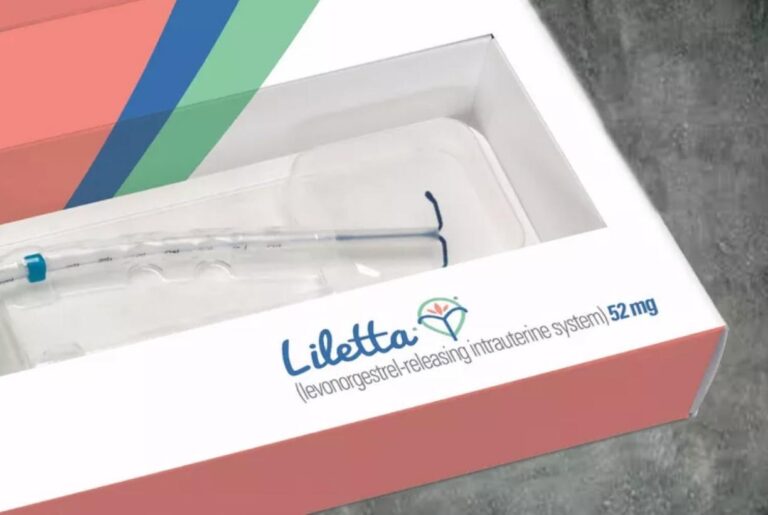Over the past few decades, intrauterine devices, or IUDs have become popular among women who want to prevent pregnancy for up to 10 years. Unfortunately, one popular IUD called ParaGard has been sued for causing complications due to a broken arm. So, what is the ParaGard arm broke off? Read this article to find out!
What is the ParaGard Intrauterine Device?
Before you find out about the lawsuit case of the ParaGard arm broke off, it would be good to know about the ParaGard IUD. What is it? In short, the ParaGard IUD or intrauterine device is a T-shaped small contraceptive device placed in a woman’s uterus to prevent pregnancy for ten years.
In addition, ParaGard is also the only contraceptive of the five IUDs approved by the US Food and Drug Administration (FDA) that does not use the hormone progestin. Instead, this contraceptive made by Teva Pharmaceuticals is a non-hormonal IUD that uses copper to prevent pregnancy.
Wrapped in copper wires, the ParaGard IUD releases copper ions in a woman’s uterus that make it inhospitable to sperm and eggs. Thanks to the release of copper ions in the uterus, this contraceptive can prevent pregnancy for up to 10 years. This is what makes the ParaGard IUD popular among women.
Unfortunately, in recent years, some women have claimed that the ParaGard IUD has a design flaw that causes the contraceptive to break upon removal. The result of the ParaGard arm breaking off eventually caused some women to experience serious complications. This is what eventually led to the ParaGard IUD lawsuit.
Injuries and Complications Caused by the ParaGrad IUD
Basically, the main cause of ParaGard IUD injuries is due to one or both arms of the ParaGard IUD breaking off during removal. Ideally, this intrauterine device should remain intact during removal. Sadly, some patients and doctors have reported cases where it broke off during removal, leaving copper fragments in the uterus.
However, if one or both arms of the IUD break off, the doctor should immediately perform an invasive procedure to retrieve the remains of the broken part. The most common example of an invasive procedure is a hysteroscopy where the doctor will insert an endoscope through the cervix into the uterine cavity.
In addition, in more extreme cases, patients may require other procedures such as laparoscopy, laparotomy, and hysterectomy. What are they?
- Laparoscopy: A surgical procedure that allows the surgeon to access the inside of the abdomen and pelvis without having to make large cuts in the skin.
- Laparotomy: A cesarean section procedure to remove a broken piece of IUD in the uterus
- Hysterectomy: A procedure to remove the uterus which may cause permanent infertility in women.
Even worse, in some unfortunate cases, doctors are unable to find the broken pieces of the IUD at all. Consequently, these pieces will become embedded in the uterine wall or move, causing serious complications and side effects. These complications include:
- Severe menstrual pain
- Cramping
- Heavy bleeding and spotting,
- Inflammatory reaction, a pelvic inflammatory disease
- Infection
- Organ perforation, uterine rupture, and organ damage
- Infertility
What is the ParaGard Arm Broke Off Lawsuit?
Since the ParaGard arm broke off case surfaced, there have been numerous lawsuits filed against its makers, Teva Pharmaceuticals and CooperSurgical. Then, as of the 2022 litigation, there are four claims that victims filed in the ParaGard lawsuit. For more details, check out the explanation below!
1. Defective Design
Under both strict liability and product liability standards, it is clear that pharmaceutical companies are legally liable for a victim’s injuries. This rule applies if a company’s product design poses a significant risk, and the product is used as designed.
Similar to other IUDs on the market, the ParaGard IUD works to prevent pregnancy. But unlike other IUDs on the market, the Paragard IUD has arms that protrude 90 degrees straight from the center cylinder.
In other words, Teva Pharmaceuticals and CooperSurgical should have foreseen that this could increase the risk of breaking one or both arms, especially during removal.
2. Manufacturing Defect
Under the strict liability standard, it is said that pharmaceutical companies are legally liable for injuries resulting from defective products. This rule applies if the product had a defect when it left the manufacturer’s possession and made a substantial contribution to the injuries sustained by the victim.
In this case, the design of Teva Pharmaceuticals and CooperSurgical may have been poor, causing the ParaGard IUD sleeve to break easily despite its original good design. The manufacturing defects of these companies are also evidenced by several things, which include:
- Testimonies from workers who made the ParaGrad IUDs
- Internal memos and communications
- Forensic analysis of defective IUD devices
3. IUD Labeling for Failing to Warn of Fracture Risk
Under existing laws, pharmaceutical companies are required to warn healthcare providers of the risks of a product. Also, pharmaceutical companies are required to display ways to avoid these risks to doctors and healthcare providers.
In this case, Teva Pharmaceuticals and CooperSurgical failed to do so by displaying improper labeling on the ParaGard IUD packaging. On the packaging, the companies did not provide complete information about the high risk of IUD breakage during removal and how best to avoid it.
4. Teva Pharmaceuticals and CooperSurgical were Negligent
In general, there are four elements that plaintiffs prove in a negligence lawsuit against a company. Below are the element’s explanations:
- The defendant owed a duty of utmost care to the plaintiff
- The defendant breached the duty of care to the plaintiff
- The breach caused injury to the plaintiff
- The injury resulted in money loss
However, Teva Pharmaceuticals and CooperSurgical owed a duty to their customers to provide a properly designed and manufactured ParaGrad IUD device. Arguably, both companies breached that duty by providing devices with arms that could break.
The broken arm of the ParaGrad IUD resulted in fragments being scattered in the woman’s uterus. As a result, many female patients have had to experience serious complications and undergo invasive procedures to address these complications. This also resulted in these patients incurring monetary losses, among others:
- Medical bills
- Lost salary
- Loss of future income
- Pain and suffering
Why File a ParaGard Arm Broke Off Lawsuit??
There are reasons why you should file a ParaGard IUD lawsuit. After all, by filing this lawsuit against Teva Pharmaceuticals, you can get compensation for the complications you have suffered from the ParaGard arm broke off IUD. These damages that you may be entitled to include:
- Medical bills
- Lost wages
- Pain and suffering
- Loss of consortium or marital intimacy
- Emotional distress
Have You Familiar with ParaGard Arm Broke Off?
Many women have filed lawsuits against Teva Pharmaceuticals because one or both arms of its ParaGrad IUD product broke off during removal in the uterus. This caused some women to experience serious complications. If you are one of the many women who experienced this incident, then you deserve compensation.



